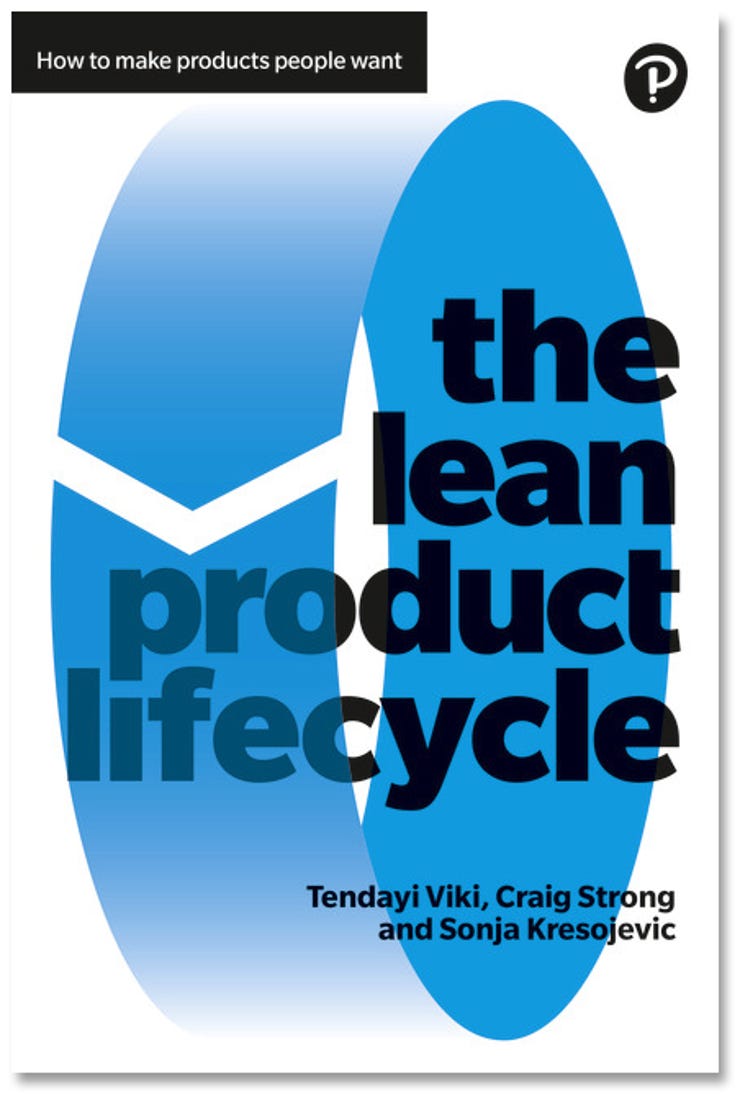The Lean Product Lifecycle, book review: How to find, and keep, a competitive edge


The Lean Product Lifecycle: How to make products people want • By Tendayi Viki, Craig Strong and Sonja Kresojevic • Pearson • 264 pages • ISBN 978-1292186412 • £16.99
If every company has to be a technology company these days (because everything you make or sell either uses or at least relies on technology), then every company needs to know how to create products — from thinking them up to retiring them. A product doesn't have to be something physical, or even a piece of software; it might be something you sell or something you use internally, like a service or a process.
Getting a competitive advantage and having good financial management to make the most of that advantage isn't enough when the world changes this fast, argue the authors of this book about how to deliver the much-trumpeted 'digital transformation'. You need to keep finding new competitive advantages, looking for the next one while you're building on the one you already have — and winding down the products that aren't giving you any advantage any more. Instead of one big business model, you need a series of models.
That's a lot of investment and development, so keeping it manageable means being lean. But lean isn't mean or cheap or cost-cutting, any more than agile is about being in a hurry: it's doing the right amount of the right thing at the right time. That sounds easy, but what's the right thing, what's the right time and what's the right amount.
To help you discover that, The Lean Product Lifecycle sets out six stages — although in reality it's not going to be a neat, step-by-step process. Ideas, Explore and Validate are where you're looking for a profitable business model; Grow, Sustain and Retire are where you're executing the business model — up to the point when you move on and see what can be done with the freed-up resources. It's good to see an emphasis on handling the end of a product's life responsibly, as this is often ignored but can be vital for persuading customers to buy from you again.
SEE: 10 books every small business entrepreneur should read (free PDF)
The Lean Product Lifecycle is based on what authors Tendayi Viki, Craig Strong and Sonja Kresojevic learned as part of the team changing the way educational publisher Pearson created new products and made investment decisions. Thankfully the book doesn't concentrate on how any one company works, but includes examples and lessons from a wide range of organizations and industries.
It's a very practical guide, with a section for each of the six stages, each one featuring exercises like capturing the value proposition or business model for your product (with instructions and visuals to walk you through something more structured than just sitting around 'brainstorming'), and a structured template to record all the information you need to move on to the next stage.
These exercises are where you'll find some colourful names. 'A picnic in the graveyard' is where you look for products like the one you're creating that came out and then did nothing — so what's different about your ideas? 'Dave McClure's pirate metrics for lean startups' are the useful numbers for acquisition, activation, retention, revenue and referral of customers, made more memorable by what the initial letters spell. HiPPOs are 'Higher Paid Person's Opinions', or what the boss thinks ("feed HiPPOs data" means compare those opinions to actual facts and figures rather than just assuming the boss is right). 'The Mom Test' isn't 'can your mother use it', but 'ask the questions your mother has to reply to truthfully'.
The format makes this a hard book to dip in and out of, and you'll get a lot more out of it if you work your way through it, and then refer back to it as you work through your product's lifecycle. You could probably find many of this book's tools, ideas and references elsewhere, but here they're fitted into a framework you can pick up and start working with straight away.
Read more book reviews
- Five top tech books for the holiday period
- Antisocial Media, book review: Good intentions gone bad
- It Doesn't Have to Be Crazy at Work, book review: Choose calm instead
- The Internet, Warts and All, book review: How to regulate a messy system
- The Evolved Executive, book review: Banishing fear from the workplace